I discovered and visited a lot of places on my own the first time I went to Japan in the summer of 2008. My schedule during the 2 weeks when I had the Japan Rail Pass was intense. One one of the mornings, I headed out at 6.40 am from Nagoya and 3 hours and a shinkansen ride later, found myself at the Tourist Info Centre in Kanazawa. After getting the information I needed, I quickly went to buy my bus ticket to Shirakawa-go.
First stop was Higashi Chaya which is supposed to be the geisha district. I didn’t think it was worth a visit. I quickly made my way towards the famous Kenroku-en as it started to rain. I found shelter under a restaurant’s entrance. Despite the rain, it was a lovely little walk up the hill – the souvenir shops, the food stores and of course the ice-cream. I got lost when I took a turn to the right which took me instead to the castle.
I truly wasn’t lucky with the weather. Even treating myself to a matcha ice cream didn’t do the trick. Along with Kairaku-en and Koraku-en, Kenroku-en is one of the Three Great Gardens of Japan. Its name was derived from the “Chronicles of the Famous Luoyang Gardens” (洛陽名園記), a book by the Chinese poet Li Gefei (李格非), and stands for the six attributes of a perfect landscape: spaciousness, seclusion, artifice, antiquity, waterways, and panoramas.
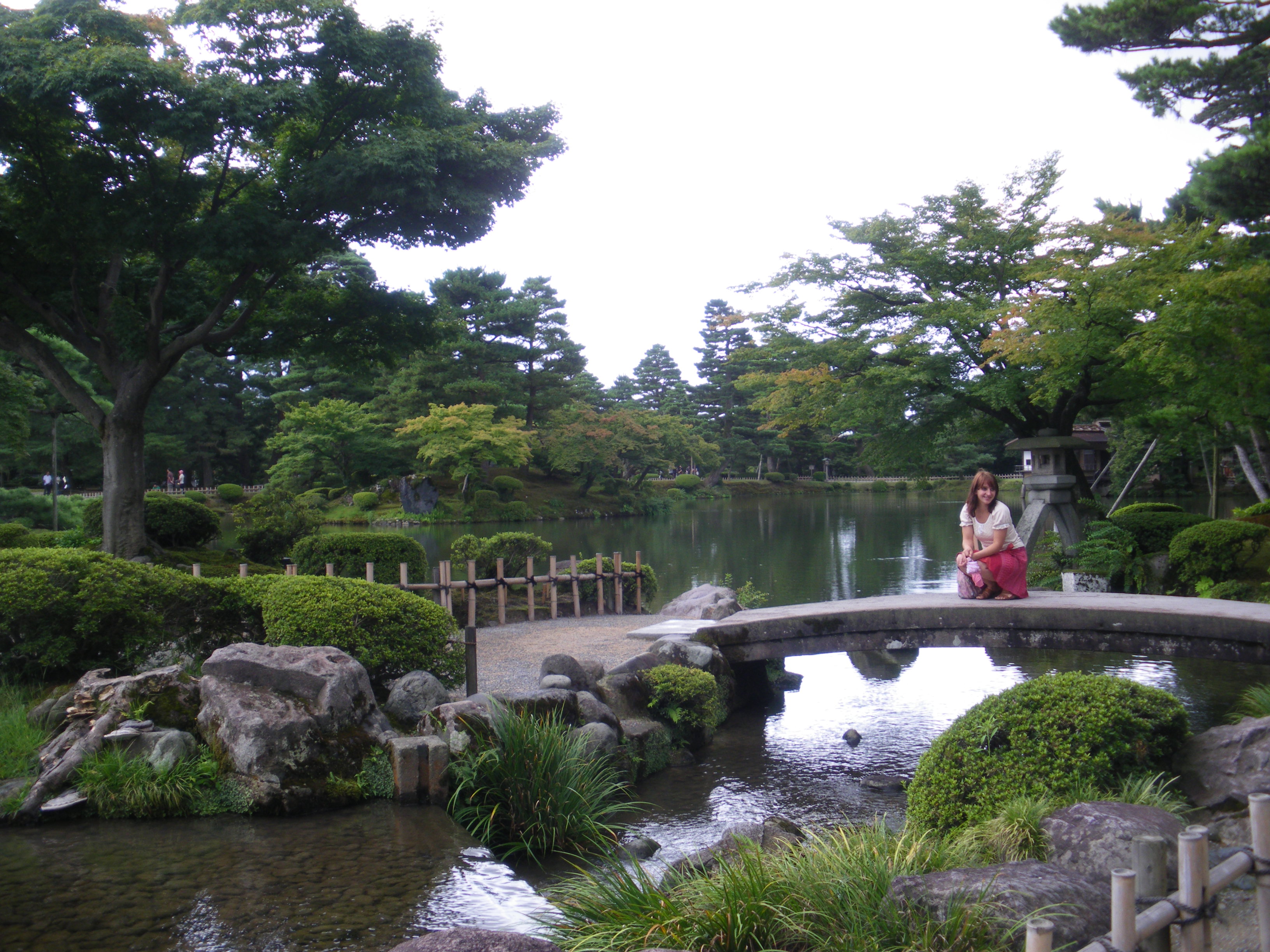
Unfortunately, I didn’t think much of Kenroku-en. The weather didn’t help; neither did getting lost in the castle grounds trying to get there. I stopped at a shop in Kenroku-en while the rain was pouring furiously and chatted with the 3 older people who were taking care of the shop. They were impressed with my Japanese which wasn’t great at all but it was good to know that they thought it was impressive enough – My Japanese then was good if I spoke to someone for 5 minutes but a disaster if it were any longer. They told me to just quickly finish walking around the garden and quickly head for the impressive 21st Century Museum of Contemporary Art, Kanazawa.
The centre of the museum was where Leandro Elrich’s Swimming Pool was – an actual pool that allows you to see from beneath the water. If you stand on the edge of the pool, it can actually look quite deep. In reality, only 10cm of water fills the glass-bottomed pool, and below the glass there is an aqua-coloured room.
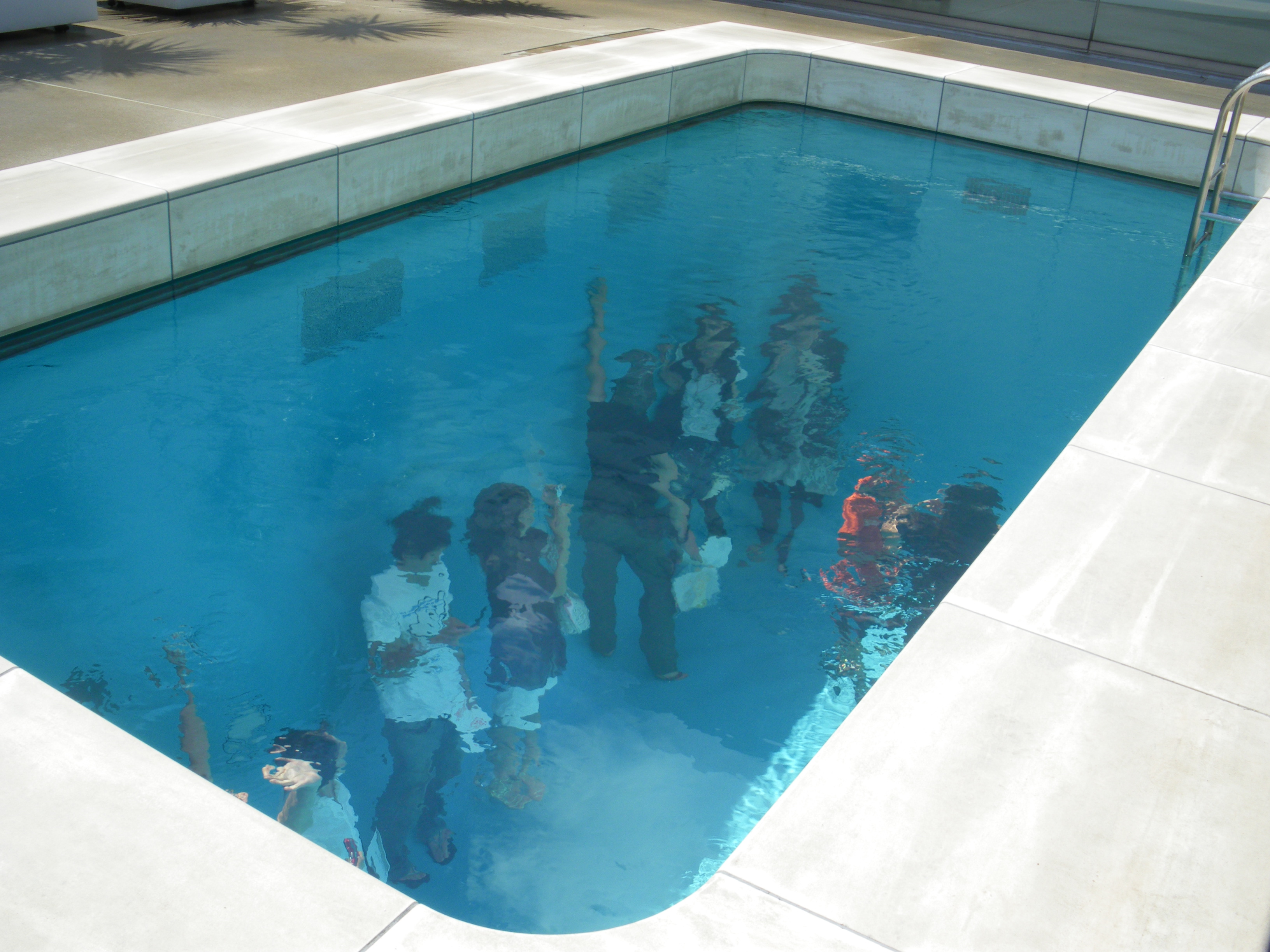
Elrich is famous for doing 3-dimensional illusions. It was a great piece of work. I was very impressed when I saw it from the top and went I went down to see it from beneath the actual pool.
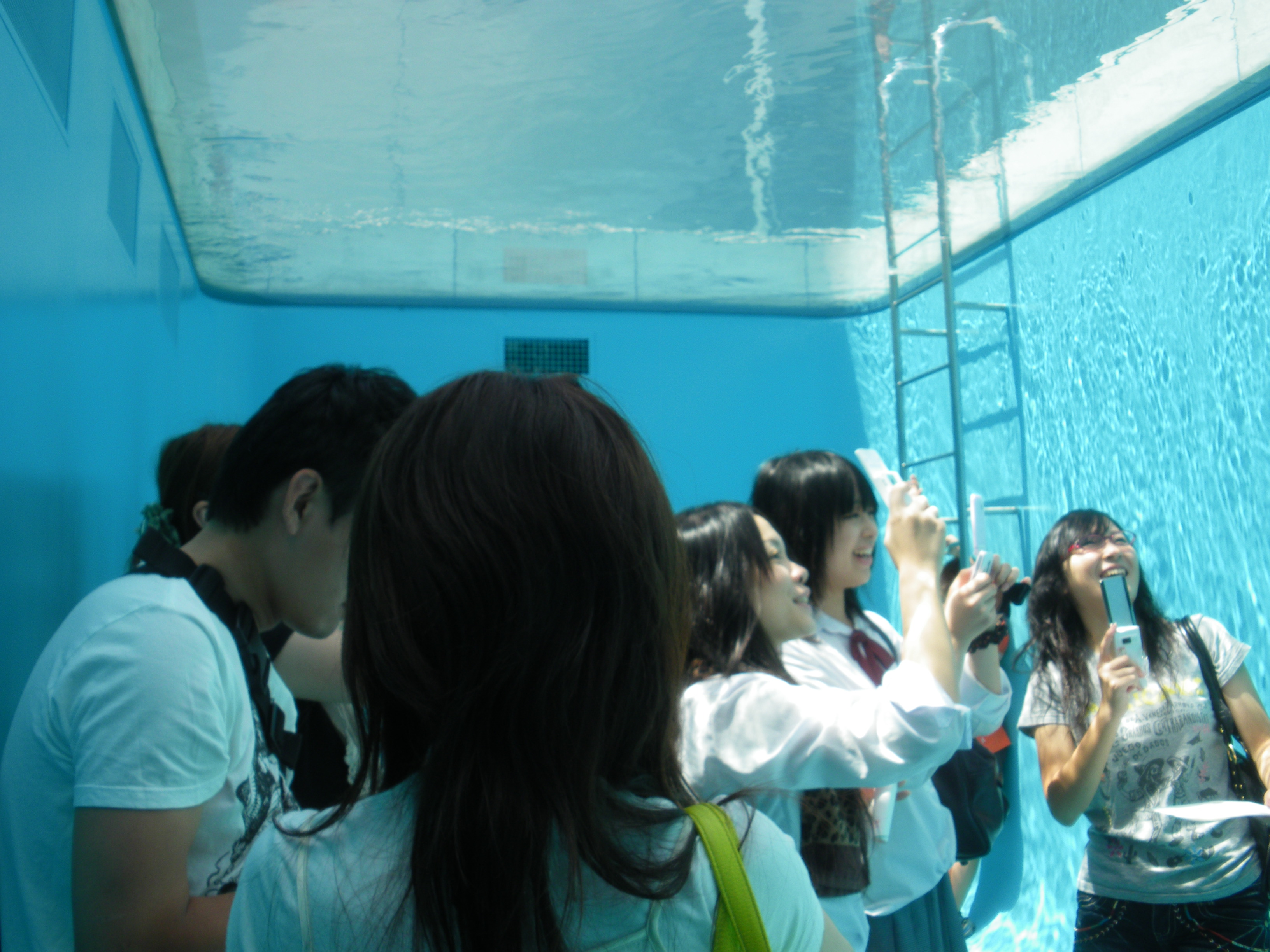
Another amazing artist whose work was on display was Ron Mueck, whose works attract a great deal of attention, to be held for the first time in Japan. Mueck’s stuff were these super life size human beings: one of a woman on a bed, one of a baby who was just born, one of a man in a boat and a whole lot more. I don’t really know how to appreciate art, but this truly caught my attention.
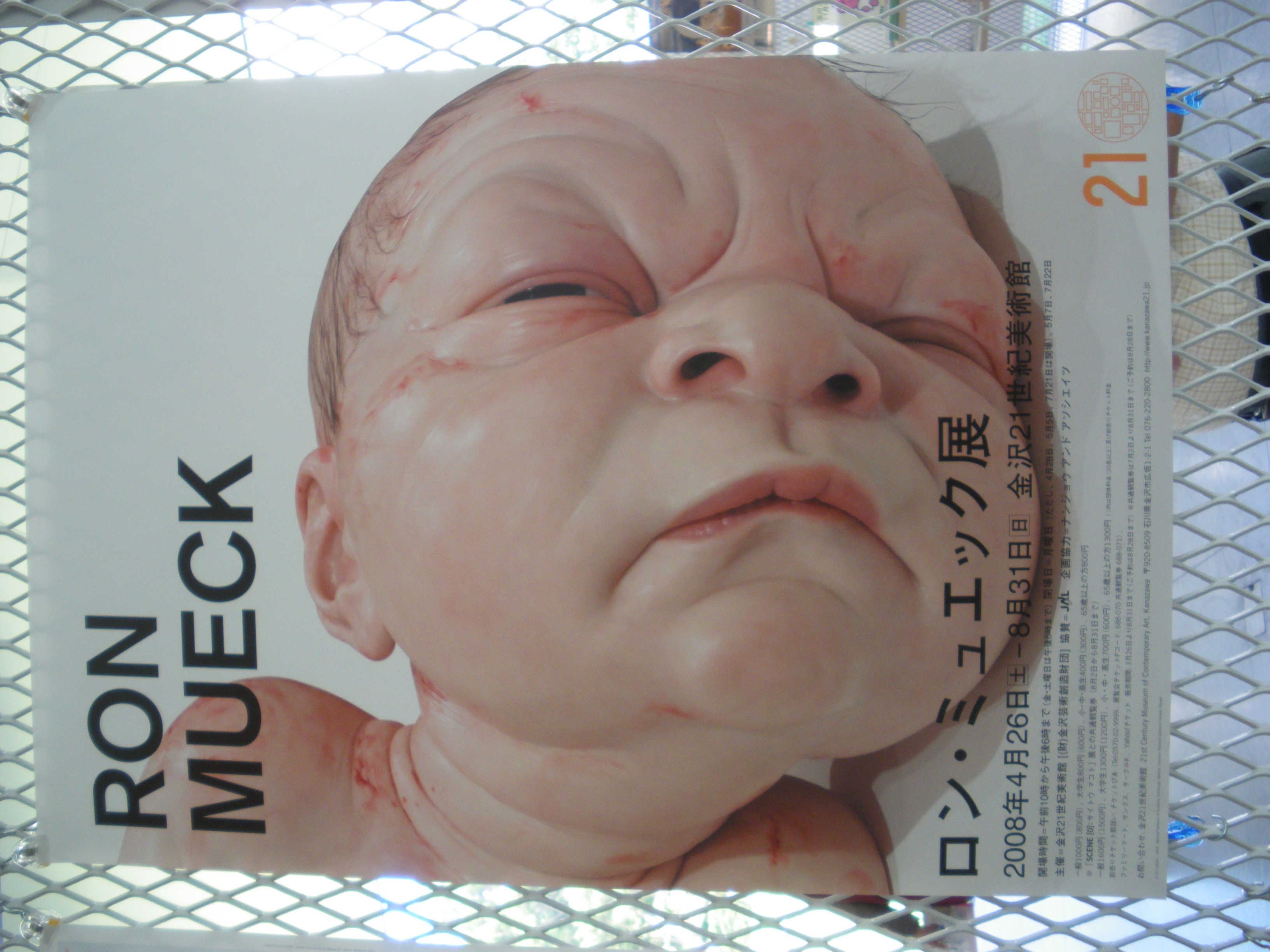
I then took the bus back to the Eki where I got myself 2 onigiris and got on the bus to Shirakawa-go. I fell asleep on the way there but when I did wake up I was mesmerized by the sight I saw. We kept going in and out of tunnels and to my right and left were just valleys and mountains and rivers. When we finally arrived, I thought Japan truly has many hidden secrets and it was no wonder it was a UNESCO site. The village reminded me of Interlaken.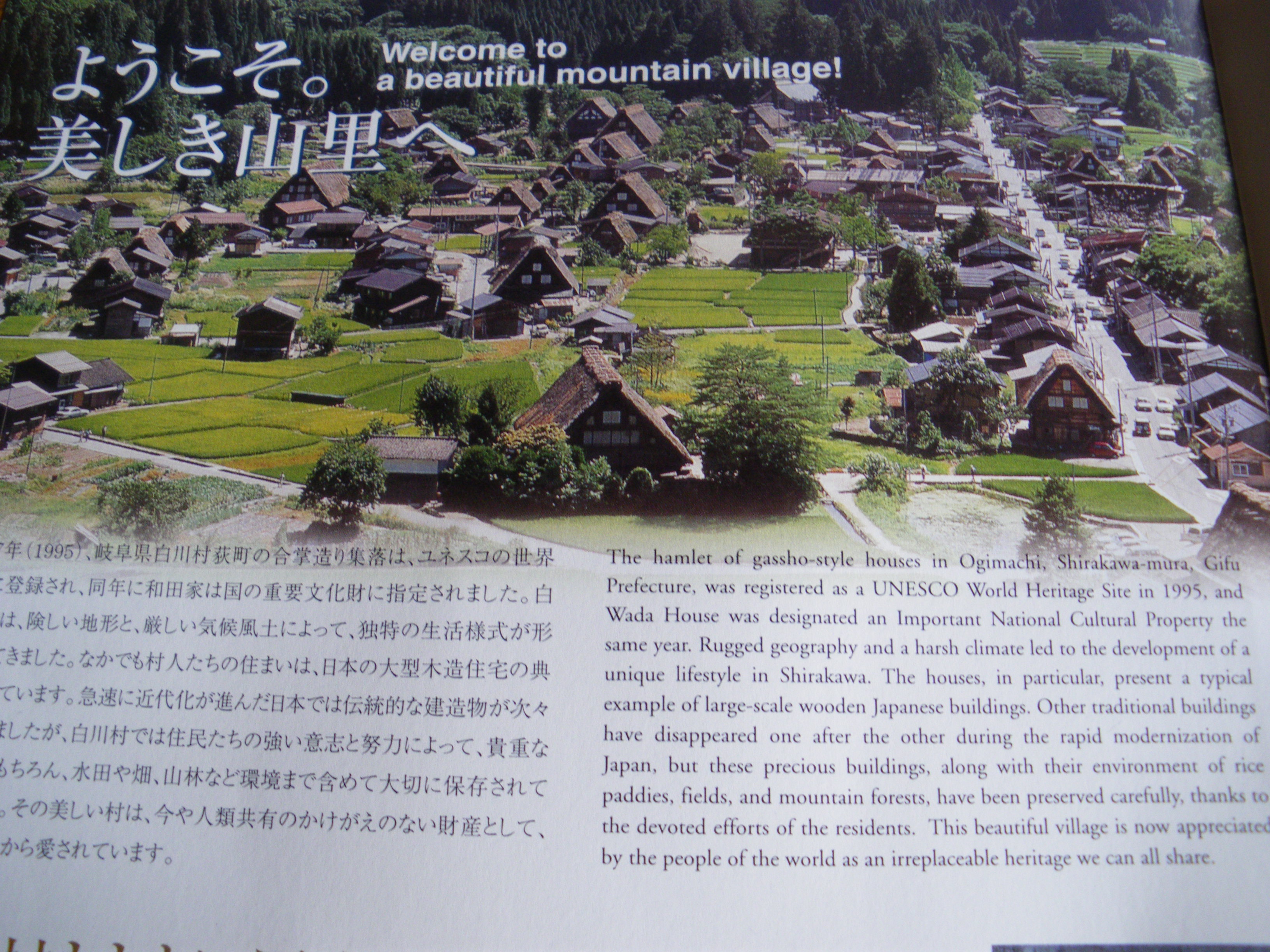
“Shirakawa-gō (白川郷, “White River Old-District”) is well known for their houses constructed in architectural style known as gasshō-zukuri (合掌造り). The Gassho-zukuri, “prayer-hands construction” style is characterized by a thatched and steeply slanting roof resembling two hands joined in prayer. The design is exceptionally strong and, in combination with the unique properties of the thatching, allows the houses to withstand and shed the weight of the region’s heavy snowfalls in winter. The houses are large, with three to four stories encompassed between the low eaves, and intended, historically, to house large extended families and an highly-efficient space for a variety of industries. The densely-forested mountains of the region still occupy 96% of all land in the area, and prior to the introduction of heavy earth-moving machinery, the narrow bands of flat lands running the length of the river valley limited the area available for agriculture and homestead development. The upper stories of the gassho houses were usually set aside for sericulture, while the areas below the first floor were often used for the production of nitre, one of the raw materials needed for the production of gunpowder.”
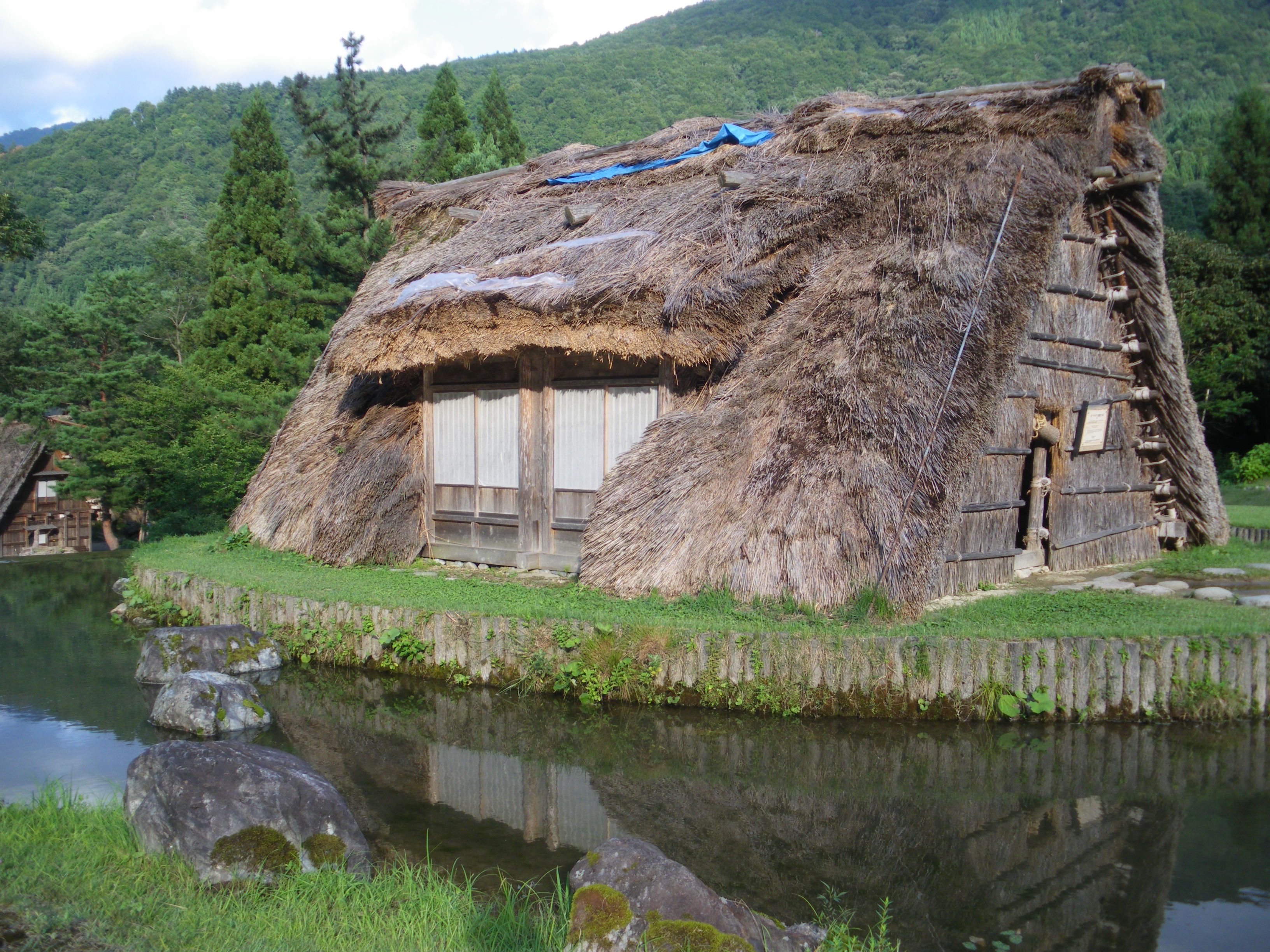
I only had about 2 hours there so after buying my bus ticket to Takayama Eki for 5.20pm, I took the mini bus which took us to the observatory point where I got someone to take the only picture of me for the day.
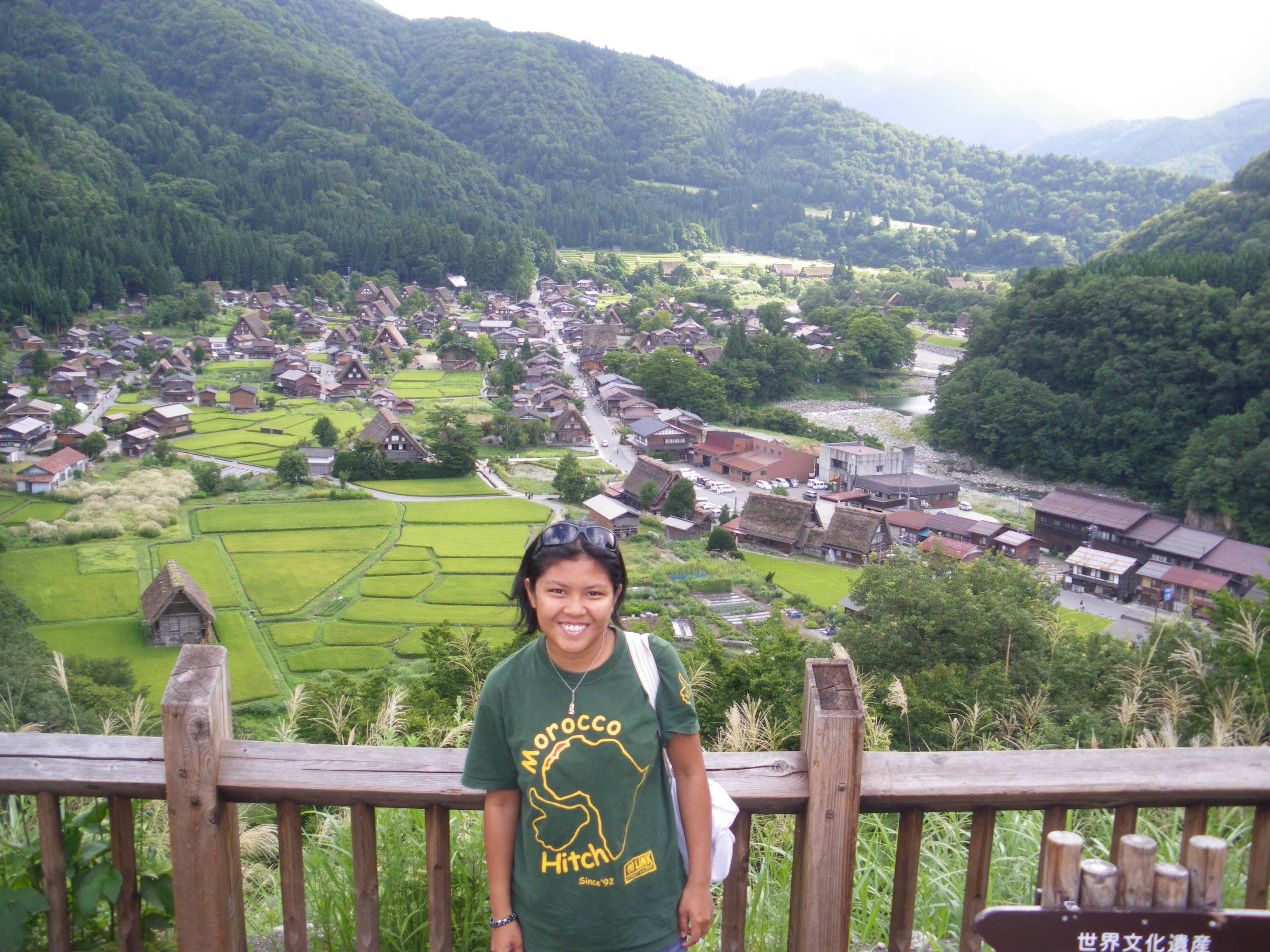
I walked down slowly, entered the Wada-ke house, one of several museum houses in the village. I then walked towards the Myozanji-Temple, some other houses, stopped for an onigiri and before I knew it, I’ve finished walking around the village.
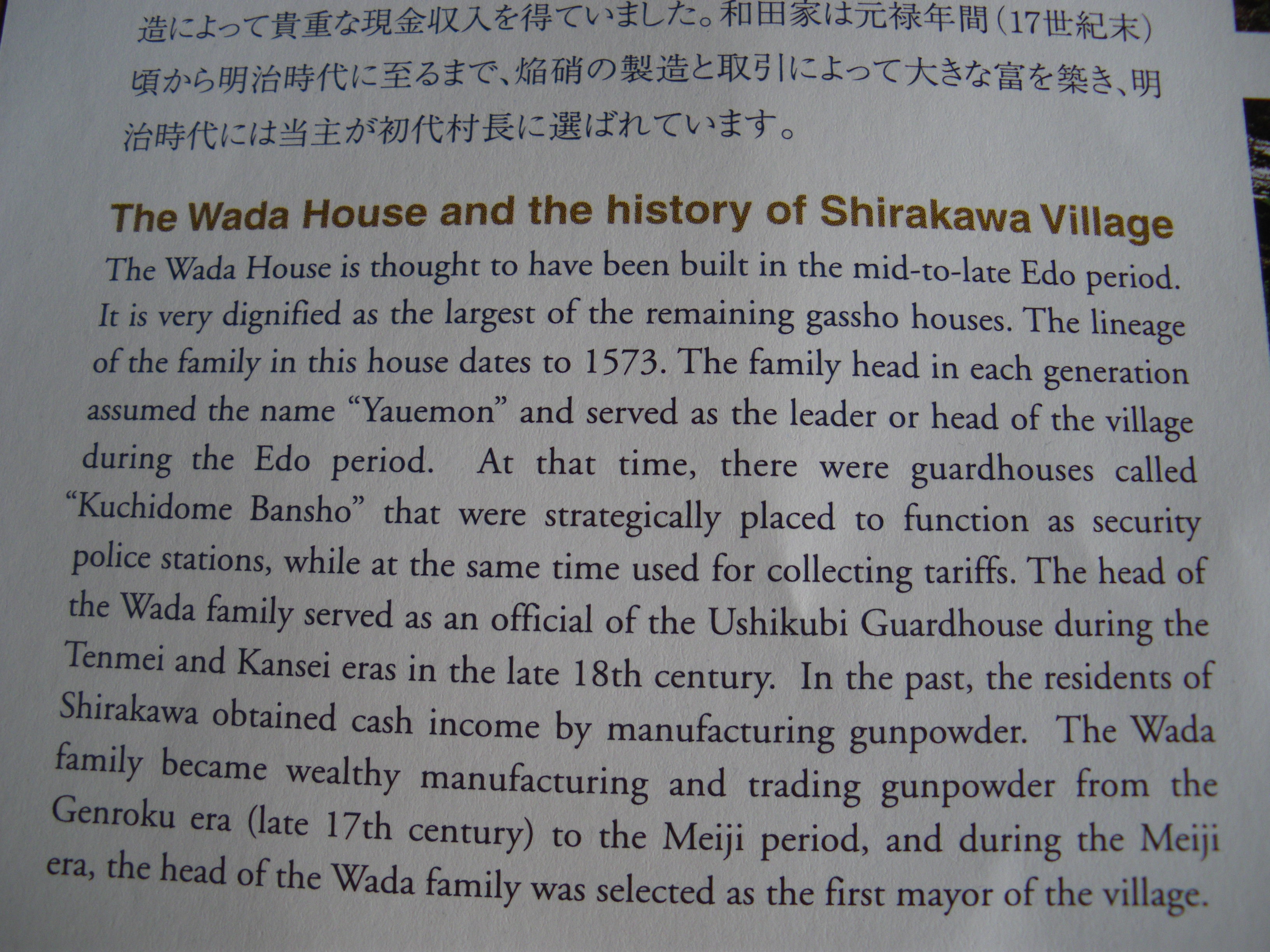
It took me less than an hour. But that meant I had enough time to go to the Gassho-zukuri Folklore Park which I recommend everyone to go to. You pay an extra 200 Yen on top of the 300 you’d pay to enter Wada-ke and you get to enter 25 houses.
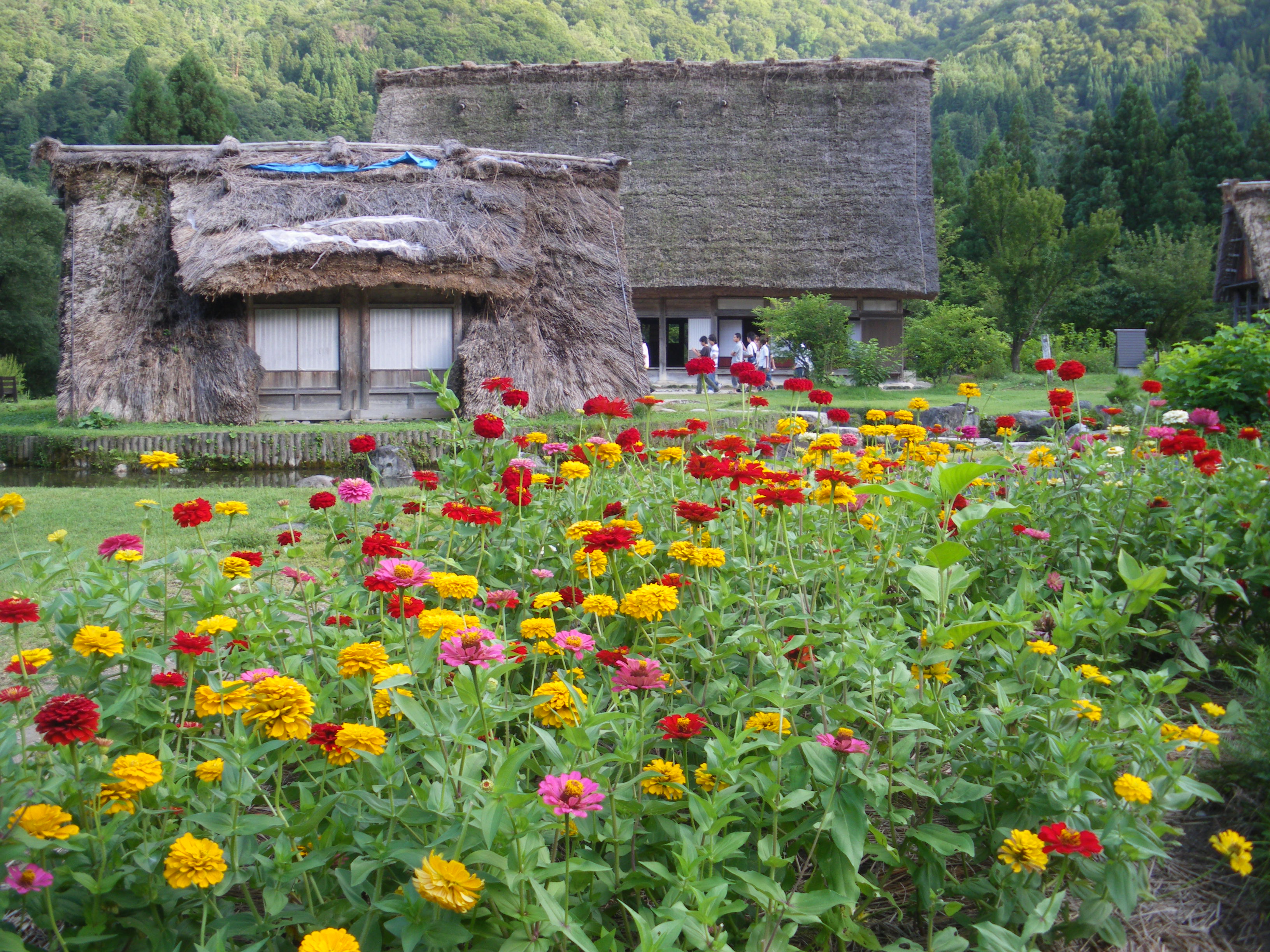
Therefore, please don’t go to the museum houses in the village because… you get so much more from just going to the outdoor open air museum. I loved the place. I was reminded of the open air museum in Wales, the one we went to which was covered in a metre of snow in Talinn, Estonia and of course the huge amazing one where my Easter Egg broke into a million pieces in Oslo, Norway.
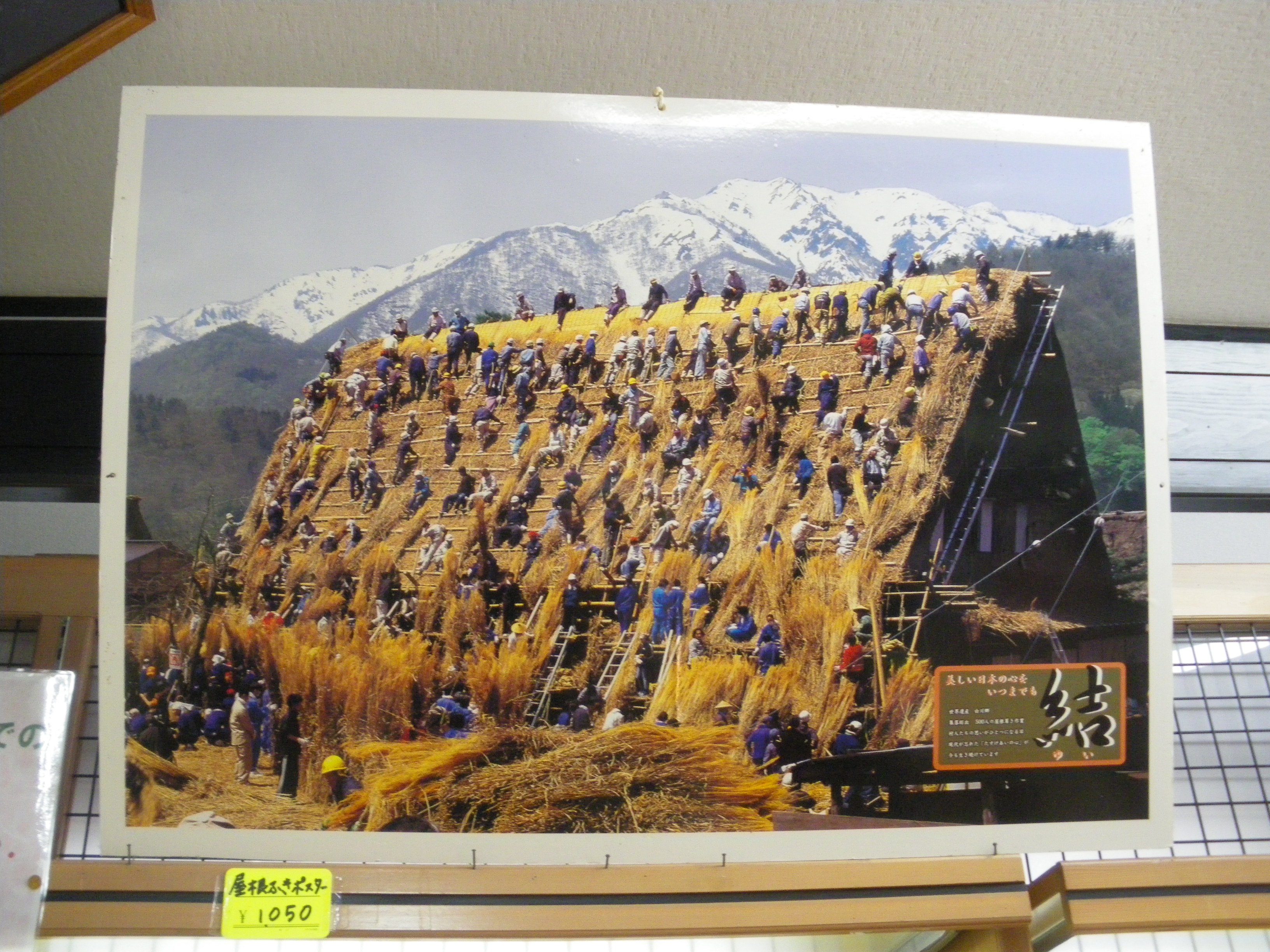
This place was just so beautiful. All the houses were close to the river and the flowers, the sound of the water, the amazing clean mountain air – you just can’t help falling in love with the whole place.
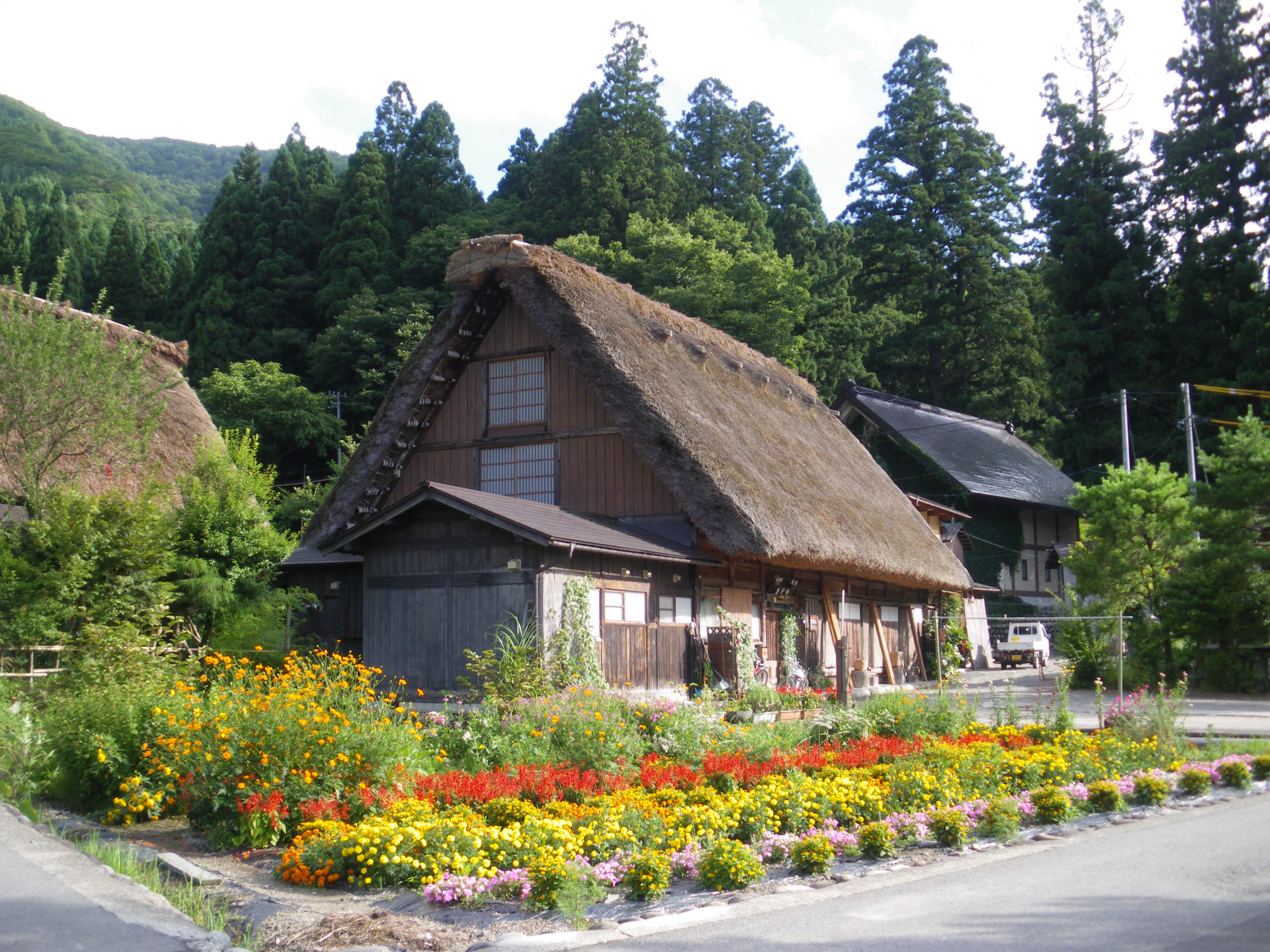
It took about an hour to get to Takayama Eki and at one point we went through a 10+km tunnel which was extremely long. It took about 4 hours to reach Nagoya – what a long day!
